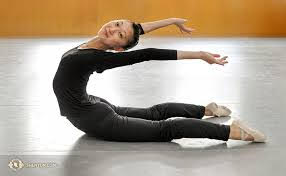Professional dancers are known for their jaw-dropping flexibility, fluid movements, and incredible body control. But behind every graceful leap or flawless pirouette lies a rigorous stretching routine that keeps their bodies strong, supple, and injury-free. These aren’t your average warm-ups—they’re secret techniques, refined over years, that unlock peak performance.
Here’s a look into the world of elite dancer stretching methods and why they’re so effective.
1. Dynamic Stretching: The Hidden Warm-Up Weapon
While most people think of stretching as holding a pose for 30 seconds, professional dancers know the real magic often starts with dynamic stretching. These are controlled, active movements that gradually increase range of motion, boost circulation, and prep the muscles for intense activity.
Examples:
- Leg swings front-to-back and side-to-side
- Arm circles and shoulder rolls
- Deep lunges with torso twists
This type of stretching mimics dance movements, which makes it ideal for waking up the neuromuscular system before rehearsals or performances.
2. PNF Stretching: The Pro-Level Flexibility Hack
One of the best-kept secrets in the dance world is Proprioceptive Neuromuscular Facilitation (PNF) stretching. It’s a technique where you stretch a muscle, contract it against resistance, and then stretch it further. It’s proven to rapidly increase flexibility something every dancer craves.
How it works:
- Stretch the muscle (e.g., hamstring).
- Contract it by pushing against resistance for a few seconds.
- Relax and immediately stretch again going deeper than before.
This method is especially popular in ballet and contemporary dance, where extreme ranges of motion are part of the performance.
3. Active Isolated Stretching (AIS): Precision Over Pressure
AIS is another lesser-known technique that professional dancers use to target specific muscles without overstretching. It involves holding each stretch for only 1–2 seconds, repeating it multiple times, and using a rope or band to assist.
Unlike traditional static stretching, AIS is more about repetition, control, and breathing, helping maintain flexibility while avoiding the microtears that can come with aggressive static holds.
4. Fascia Release and Stretching Tools
Elite dancers don’t rely on stretching alone they also target the fascia, the connective tissue that surrounds muscles. Tight fascia can restrict movement and cause discomfort, even if the muscles themselves are flexible.
To combat this, dancers often use:
- Foam rollers
- Massage balls
- Resistance bands
- Theraguns (percussive massage)
These tools are used before and after stretching to break up adhesions and increase blood flow, allowing deeper, more effective flexibility work.
5. Stretching With Breath and Mindfulness
Flexibility isn’t just physical it’s mental. Professional dancers are trained to connect breath with movement, especially during deeper stretching sessions. Long, controlled exhales help the nervous system relax, which in turn allows muscles to release tension.
Mindfulness-based techniques like yoga, meditation, and breathwork are often integrated into dance training to reduce performance anxiety and increase body awareness both essential for mastering stretching safely and effectively.
6. Stretching Frequency and Timing
Perhaps the biggest secret? Consistency over intensity. Dancers stretch every day, often multiple times a day, but they do it intelligently:
- Before class or performance: Dynamic, movement-based stretching
- After training: Deeper, static or PNF stretching when muscles are warm
- On rest days: Gentle stretching, yoga, or fascia release for recovery
This layered, time-based approach prevents injury and supports long-term flexibility gains.
Stretching Like a Dancer Is an Art and a Science
Professional dancers treat stretching not as an afterthought but as a cornerstone of their craft. Through techniques like dynamic warm-ups, PNF, AIS, fascia release, and mindful breathwork, they achieve a level of flexibility that seems almost superhuman.
But the real secret? Discipline and intention. Anyone can start incorporating these techniques what matters is consistency, awareness, and respecting your body’s limits while gradually expanding them.

